Filter by
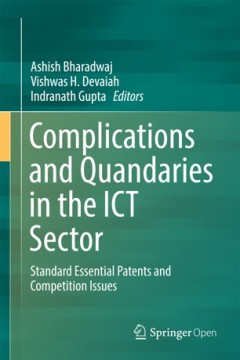
Complications and quandaries in the ICT sector : standard essential patents a…
With technology standards becoming increasingly common, particularly in the information and communications technology (ICT) sector, the complexities and contradictions at the interface of intellectual property law and competition law have emerged strongly. This book talks about how the regulatory agencies and courts in the United States, European Union and India are dealing with the rising alle…
- Edition
- -
- ISBN/ISSN
- 9789811060113
- Collation
- xxiv, 200p. : ill.
- Series Title
- -
- Call Number
- 343.099 COM c

Heritage politics in Adelaide
In the 1970s the Australian Commonwealth Government and three States, Victoria (1974), New South Wales (1977) and South Australia (1978), passed legislation to protect the built heritage within their jurisdictions. The legislation was primarily a response to two factors: a large number of public protests against the demolition of historic buildings in all Australian states by the 1970s and the …
- Edition
- -
- ISBN/ISSN
- 9780987073037
- Collation
- -
- Series Title
- -
- Call Number
- 307.12 MOS h

Ethics and civil drones : European policies and proposals for the industry
This open access book disseminates some of the results of the European H2020 AiRT Project (Technology transfer of RPAs for the creative industry). In particular, it presents findings related to mitigating safety and security concerns when civil drones are piloted by the service sector (mainly, the creative industry). European policies regarding drones generally focus on outdoor drones, but they…
- Edition
- -
- ISBN/ISSN
- 9783319710877
- Collation
- x, 92p. : ill.
- Series Title
- -
- Call Number
- 341.2422 ETH e

Handbook of life course health development
This handbook synthesizes and analyzes the growing knowledge base on life course health development (LCHD) from the prenatal period through emerging adulthood, with implications for clinical practice and public health. It presents LCHD as an innovative field with a sound theoretical framework for understanding wellness and disease from a lifespan perspective, replacing previous medical, biopsyc…
- Edition
- -
- ISBN/ISSN
- 9783319471433
- Collation
- xxiv, 664p. : ill.
- Series Title
- -
- Call Number
- 362.1 HAN h
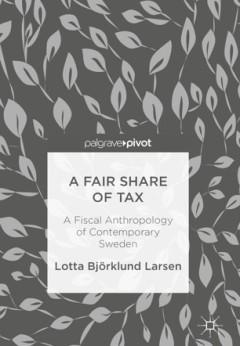
A fair share of tax : a fiscal anthropology of contemporary Sweden
This book takes a taxpayer's perspective to the relations taxation creates between people and their state. Larsen proposes that in order to understand tax compliance and cheating, we have to look beyond law, psychological experiments and surveys to include tax collectors and taxpayers' practices. The text explores the view of taxes seen as citizen’s explicit economic relation to the state and…
- Edition
- -
- ISBN/ISSN
- 9783319697727
- Collation
- xiii, 136p. : ill.
- Series Title
- -
- Call Number
- 306.3 LAR f
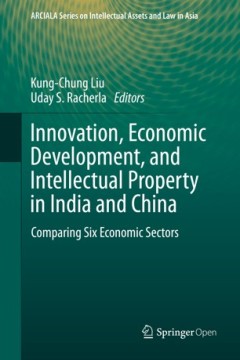
Innovation, economic development, and intellectual property in India and Chin…
This open access book analyses intellectual property and innovation governance in the development of six key industries in India and China. These industries are reflective of the innovation and economic development of the two economies, or of vital importance to them: the IT Industry, the film industry, the pharmaceutical industry, plant varieties and food security, the automobile industry, and…
- Edition
- -
- ISBN/ISSN
- 9789811381027
- Collation
- xvii, 514p. : ill.
- Series Title
- -
- Call Number
- 346.54048 INN i
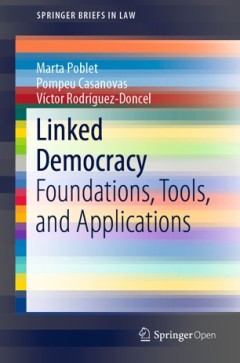
Linked democracy : foundations, tools, and applications
This open access book shows the factors linking information flow, social intelligence, rights management and modelling with epistemic democracy, offering licensed linked data along with information about the rights involved. This model of democracy for the web of data brings new challenges for the social organisation of knowledge, collective innovation, and the coordination of actions. Licensed…
- Edition
- -
- ISBN/ISSN
- 9783030133634
- Collation
- xv, 130p. : ill.
- Series Title
- -
- Call Number
- 343.0999 POB l

Regulating content on social media : copyright, terms of service and technolo…
How are users influenced by social media platforms when they generate content, and does this influence affect users’ compliance with copyright laws? These are pressing questions in today’s internet age, and Regulating Content on Social Media answers them by analysing how the behaviours of social media users are regulated from a copyright perspective. Corinne Tan, an internet governance spec…
- Edition
- -
- ISBN/ISSN
- 9781787351714
- Collation
- XI, 199 p.
- Series Title
- -
- Call Number
- 346.0482 TAN r
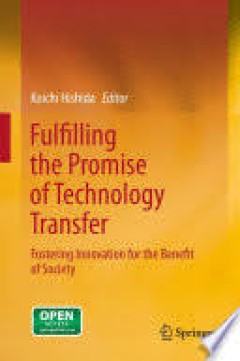
Fulfilling the promise of technology transfer : fostering innovation for the …
Universities and research institutes are increasingly expected to contribute to society by creating innovation from the returns of their research results and the establishment of new technologies. Toward that goal, Keio University in Japan held an international symposium titled “Fulfilling the Promise of Technology Transfer: Fostering Innovation for the Benefit of Society.” From that sympos…
- Edition
- -
- ISBN/ISSN
- 9784431543060
- Collation
- viii, 128p. : ill.
- Series Title
- -
- Call Number
- 338.926 FUL f
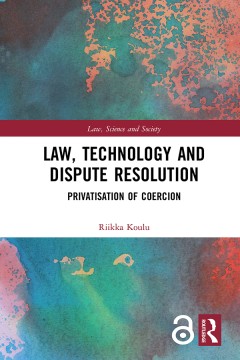
Law, technology and dispute resolution : privatisation of coercion
The use of new information and communication technologies both inside the courts and in private online dispute resolution services is quickly changing everyday conflict management. However, the implications of the increasingly disruptive role of technology in dispute resolution remain largely undiscussed. In this book, assistant professor of law and digitalisation Riikka Koulu examines the mult…
- Edition
- -
- ISBN/ISSN
- 9781315149479
- Collation
- 219p. : ill.
- Series Title
- -
- Call Number
- 347.09 KOU l
 Computer Science, Information & General Works
Computer Science, Information & General Works  Philosophy & Psychology
Philosophy & Psychology  Religion
Religion  Social Sciences
Social Sciences  Language
Language  Pure Science
Pure Science  Applied Sciences
Applied Sciences  Art & Recreation
Art & Recreation  Literature
Literature  History & Geography
History & Geography